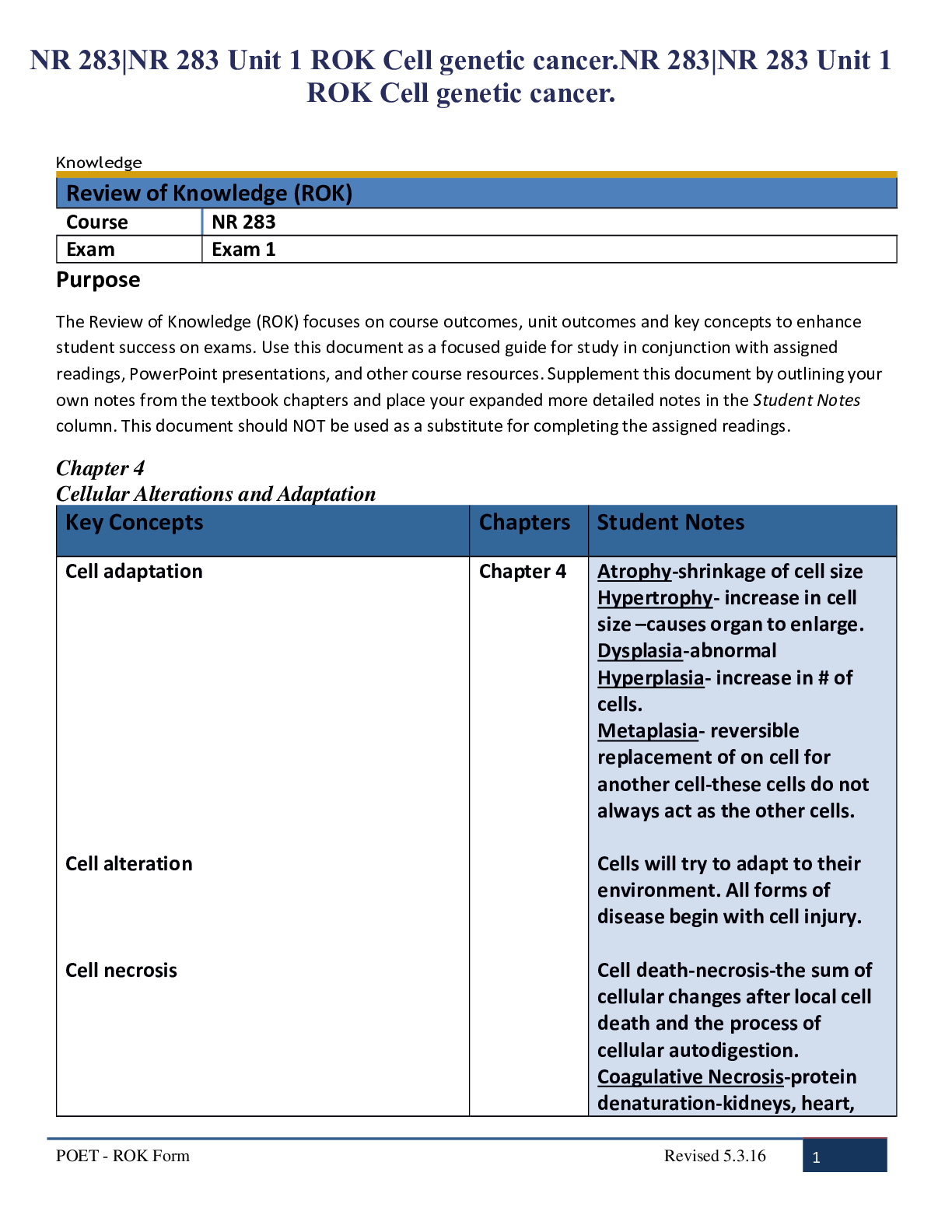*NURSING > QUESTIONS & ANSWERS > BIOS 242 DISCUSSION QUESTIONS AND ANSWERS (GRADED A) (All)
BIOS 242 DISCUSSION QUESTIONS AND ANSWERS (GRADED A)
Document Content and Description Below
UNIT 1 As a skilled microbiologist, you have been called to Farmer McDonald's farm to investigate an outbreak of sores on the udders of his cows. Your first task is to determine whether the causative... agent of the sores is a microbe. Explain how you will you use Koch's postulates to accomplish this. UNIT 2 What microscope would you use to study the complex interactions of microorganisms in a biofilm? Why is this the best choice? What would be your second choic UNIT 3 All living cells are capable of metabolism. Many metabolic pathways are amphibolic. Class, let's discuss the many different ways cells regulate their metabolic pathways to maximize efficiency. UNIT 4 You be the expert: Imagine you are a teaching a class on controlling microbial growth in the environment. To test your students, you will present them with a scenario including a site and some probable microbes present. They must design a strategy to eliminate harmful microbes from the area. In this discussion, each student (at a minimum) should present a scenario for analysis by his or her classmates, propose an answer to another classmate's scenario, and respond to all classmates who attempt to address the scenario. Be as creative as you can! UNIT 5 Individuals with third-degree burns are particularly vulnerable to infection. Can you speculate about why this is so UNIT 6 You are the public health official! Review the following case study, and discuss how you should proceed as an epidemiologist. Case study: Over 30 children younger than three years of age developed gastroenteritis after visiting a local water park. These cases represented 44% of the park visitors in this age group on the day in question. Older individuals were not affected. The causative agent was determined to be a member of the bacterial genus Shigella. The disease resulted from oral transmission to the children. Based only on the information given, can you classify this outbreak as an epidemic? Why or why not? If you were an epidemiologist, how would you go about determining which pools in the water park were contaminated? Johnny is 18 year old student who is nearing the end of his first semester at Chamberlain University. He loves his new-found freedom, all his new friends and living in the dorms with his roommate Henry. As he’s preparing to study for his final exams he finds himself with a headache, low fever and nausea, but brushes it off because he assumes it must be from stress or the flu. As the day goes on, his headache worsens, his fever spikes and he begins vomiting. With the urging of his roommate Henry, he goes to the ER where they perform an initial assessment and find him to have a fever of 103*F and he is becoming increasingly more drowsy, irritable and confused. He begins to complain of a stiff neck, starts to lose some muscle control, and petechiae begin to appear on his body. Suspecting there might be increased cranial pressure due to his symptoms, the doctor orders a lumbar puncture which reveals his CSF to be milky in appearance and sends it to the lab for further testing. The doctor has an idea of what is going on with Johnny, but seeks your expert opinion as to what exactly this may be! UNIT 7 Class, we discussed the term microbial antagonism in Unit 2 and have come across many examples of how it helps us against pathogenic microorganisms. Let's discuss the role of the intestinal microbiota in the maintenance of health and the many opportunistic pathogens that cause disease when the delicate balance of normal microbiota in this region of the body is disturbed. The assigned readings encompass a wide variety of diseases associated with infectious microbes. This week, we focus on the respiratory, digestive, urinary, and reproductive systems. As we did last week, using the information in your text (and any other resources you choose), give your patient a disease associated with any of these systems and present the history and symptoms to the class. Be creative! Be sure to offer enough information to make an educated guess, but try not to give it away too soon! Each student should present a case. Be sure to let those who respond to your case know whether they correctly diagnosed the patient. In some cases, you might offer new test results midweek if the class is stumped! Mary brought her three month old son, Charlie, into the ER because he has developed a fever and began wheezing. He has had a runny nose and some coughing for the past few days, but since it is December Mary thought it was the common cold and did not think it was something serious. As the doctor begins examining Charlie, she notices that he has a bit of a blue tint to his skin and immediately administers oxygen as well as a fever reducer. The doctor believes she knows what is going on with Charlie, but to be sure she sends a sample of his respiratory fluid to you for testing. Can you confirm her diagnosis? [Show More]
Last updated: 1 year ago
Preview 1 out of 9 pages
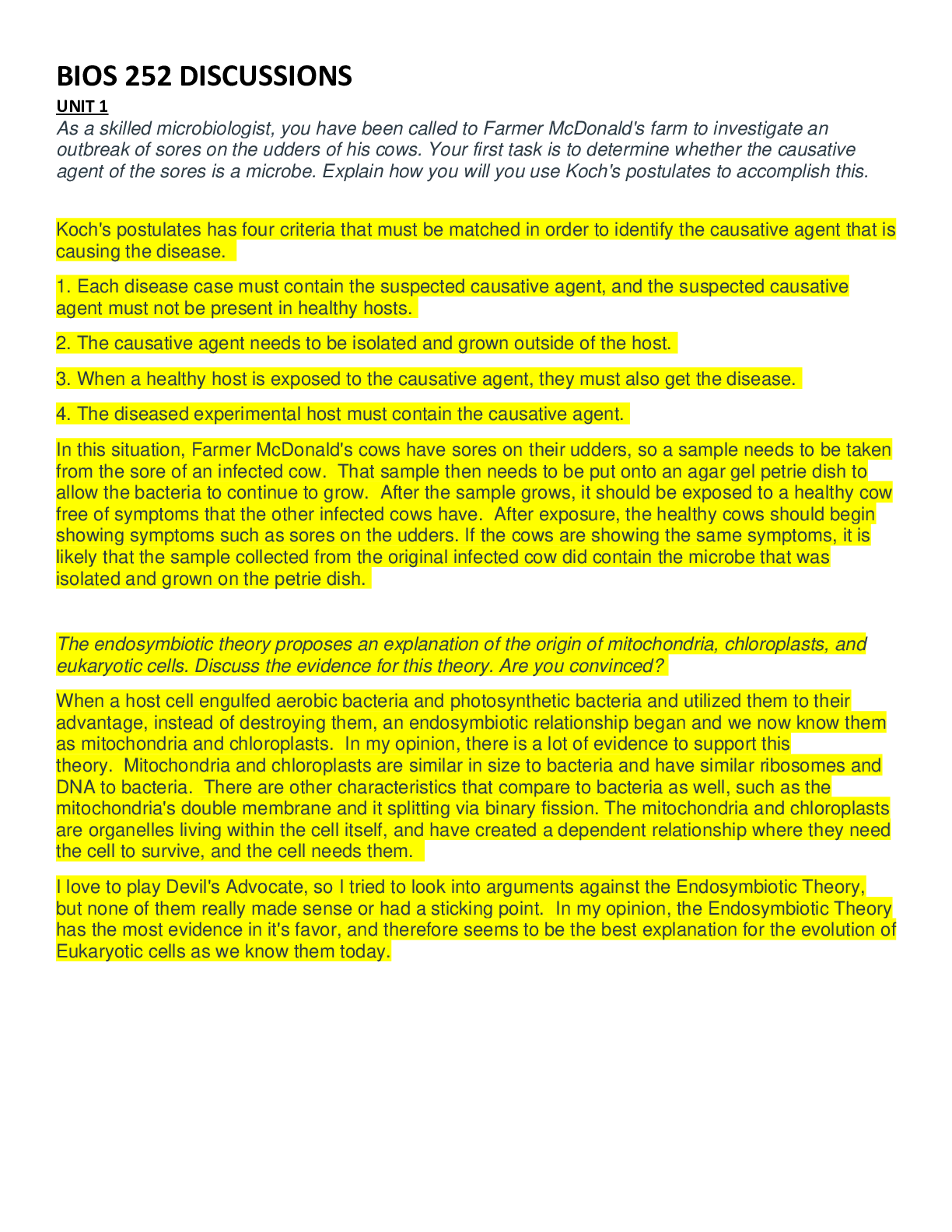
Reviews( 0 )
Document information
Connected school, study & course
About the document
Uploaded On
Apr 15, 2020
Number of pages
9
Written in
Additional information
This document has been written for:
Uploaded
Apr 15, 2020
Downloads
0
Views
37








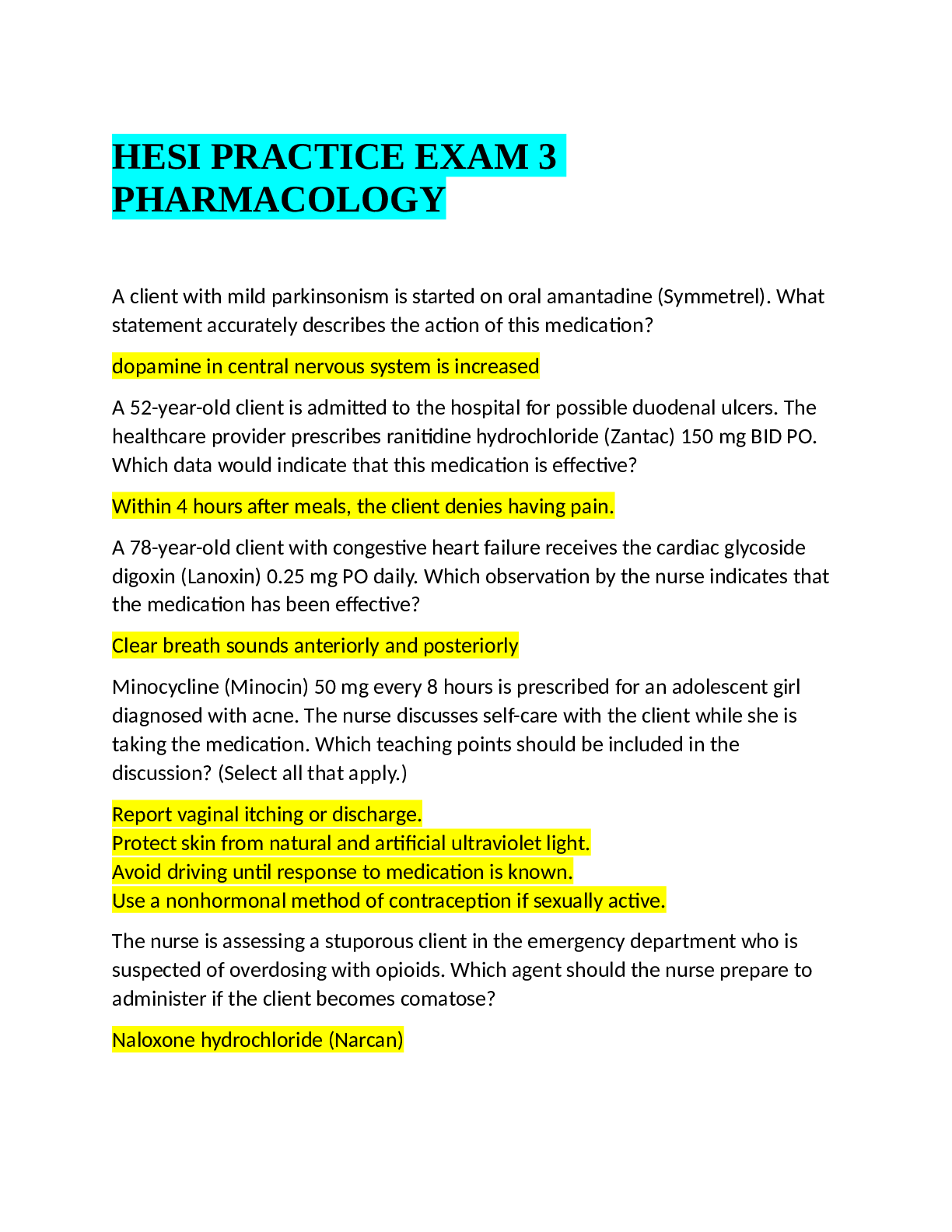





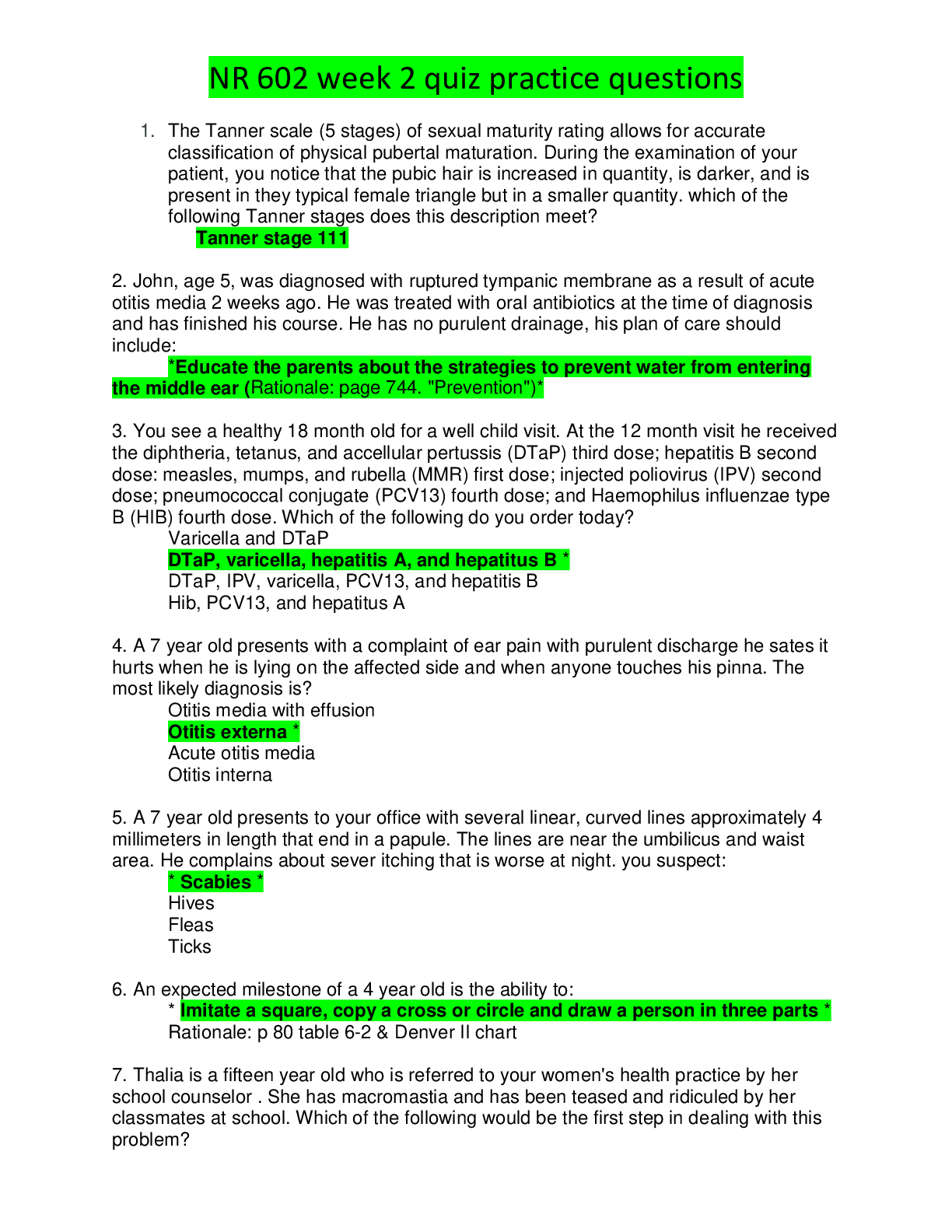
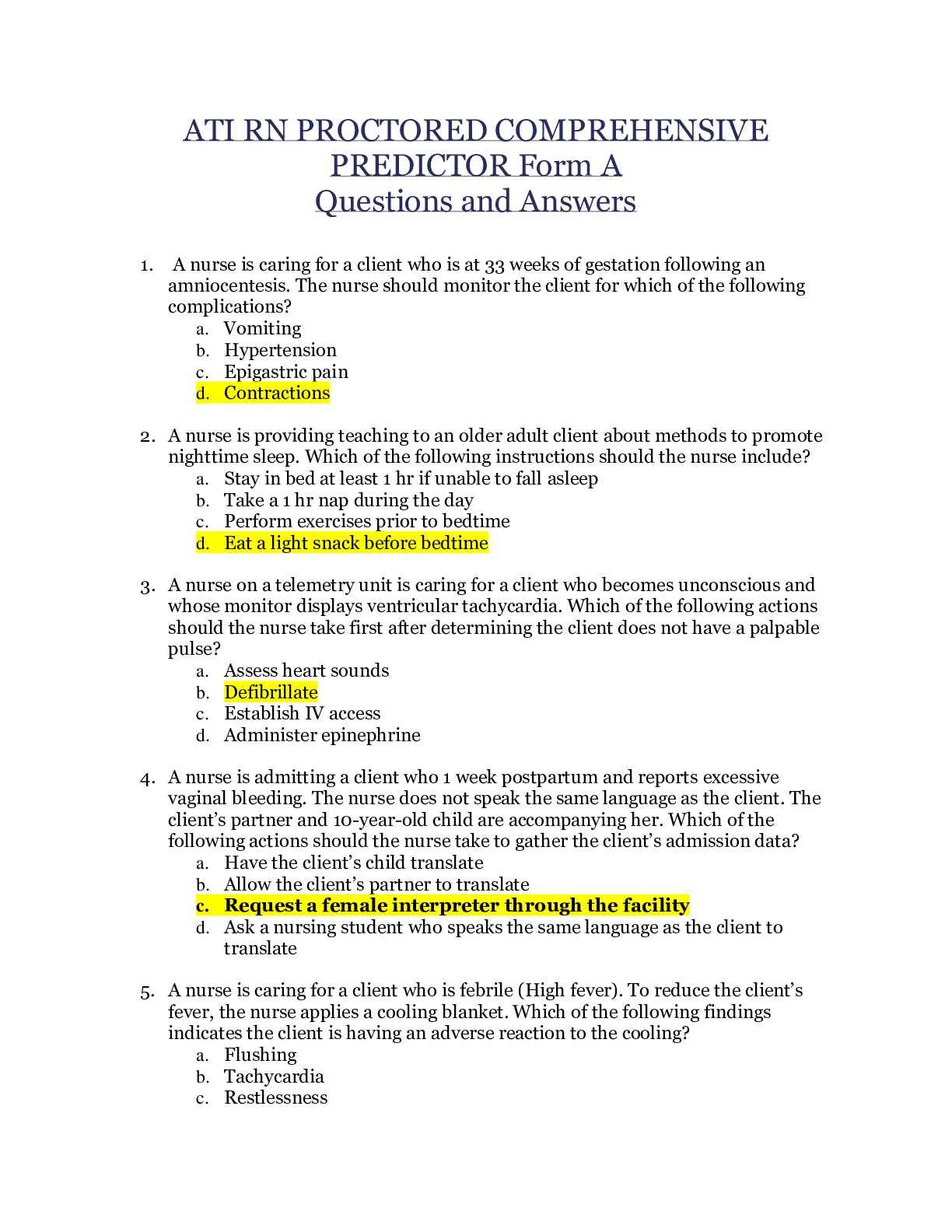
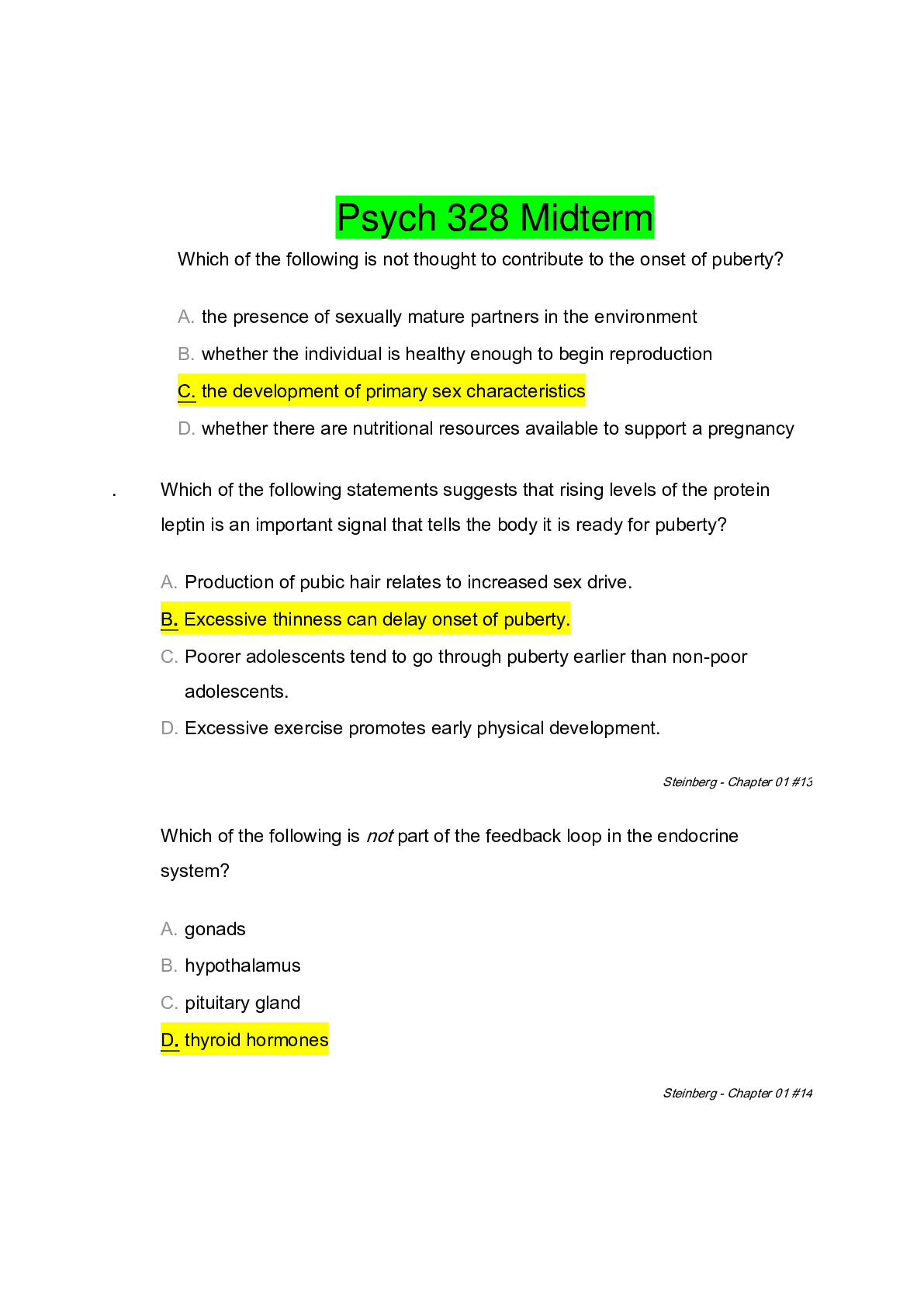
 (1).png)

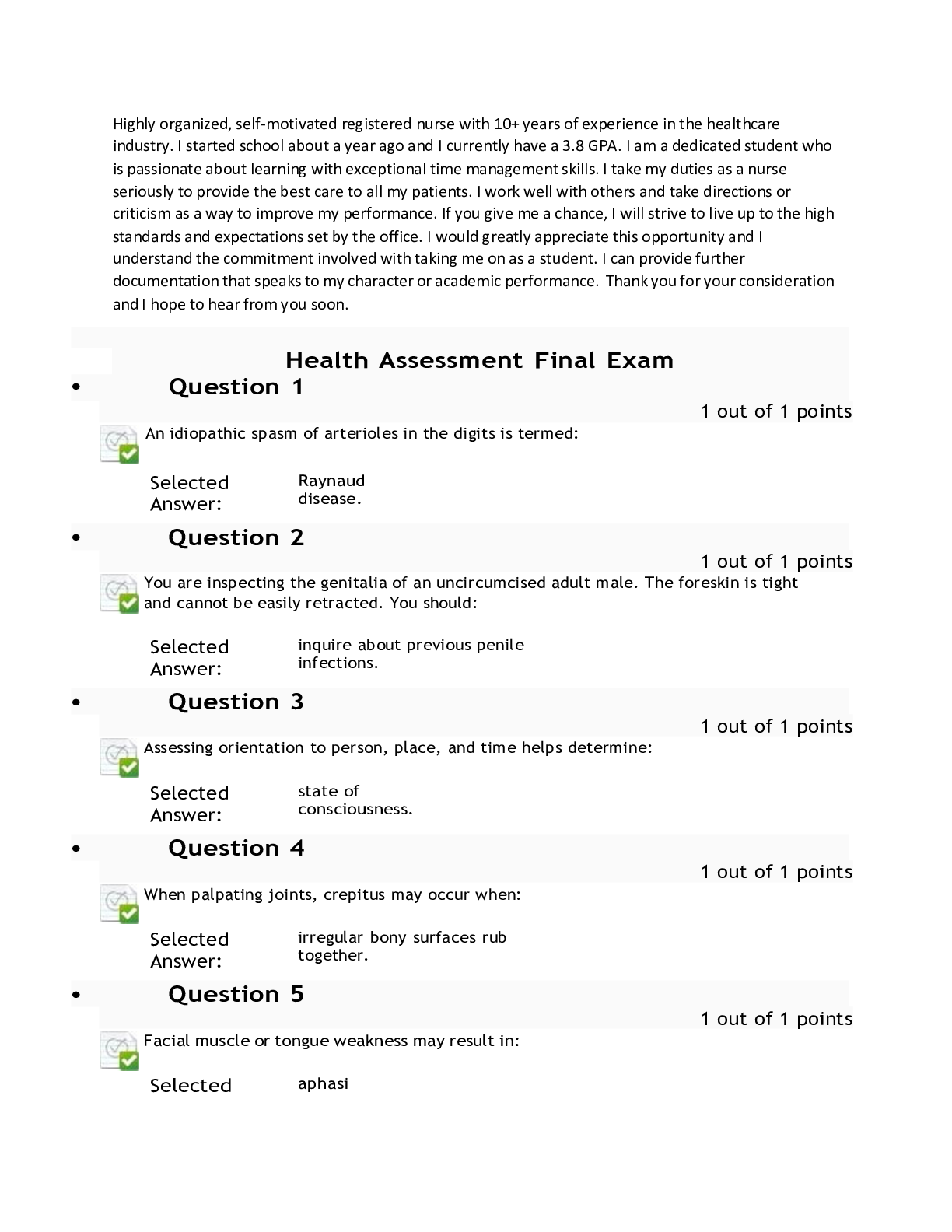
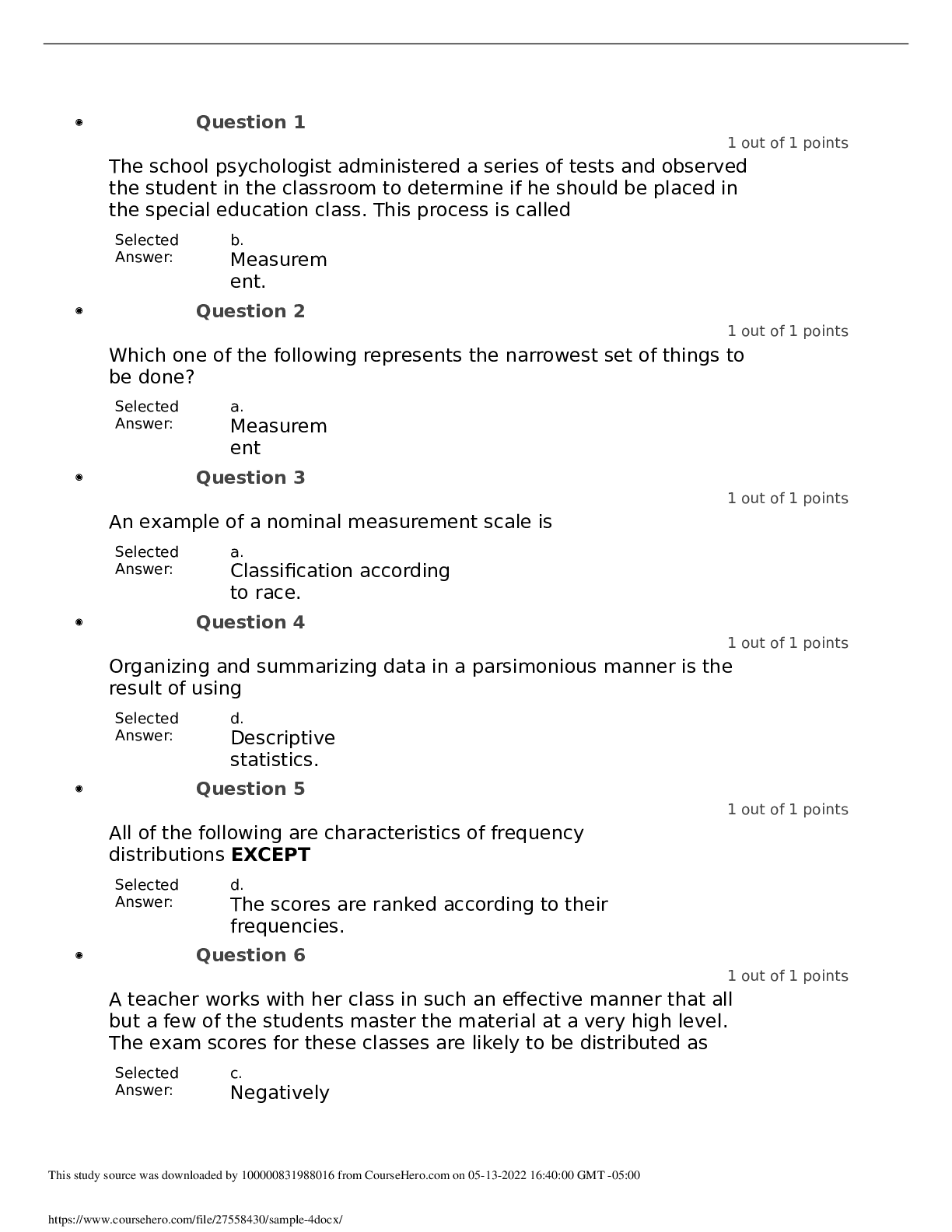
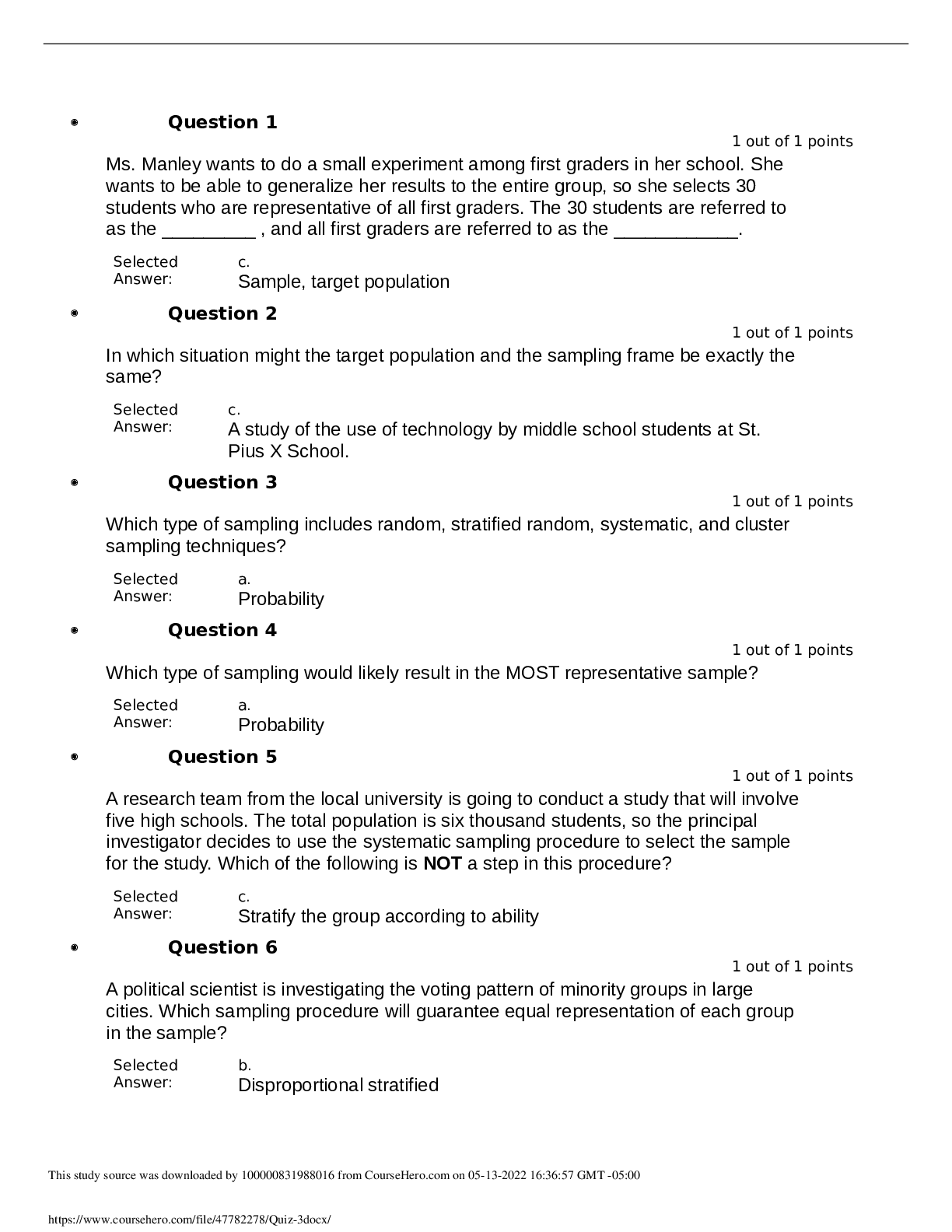


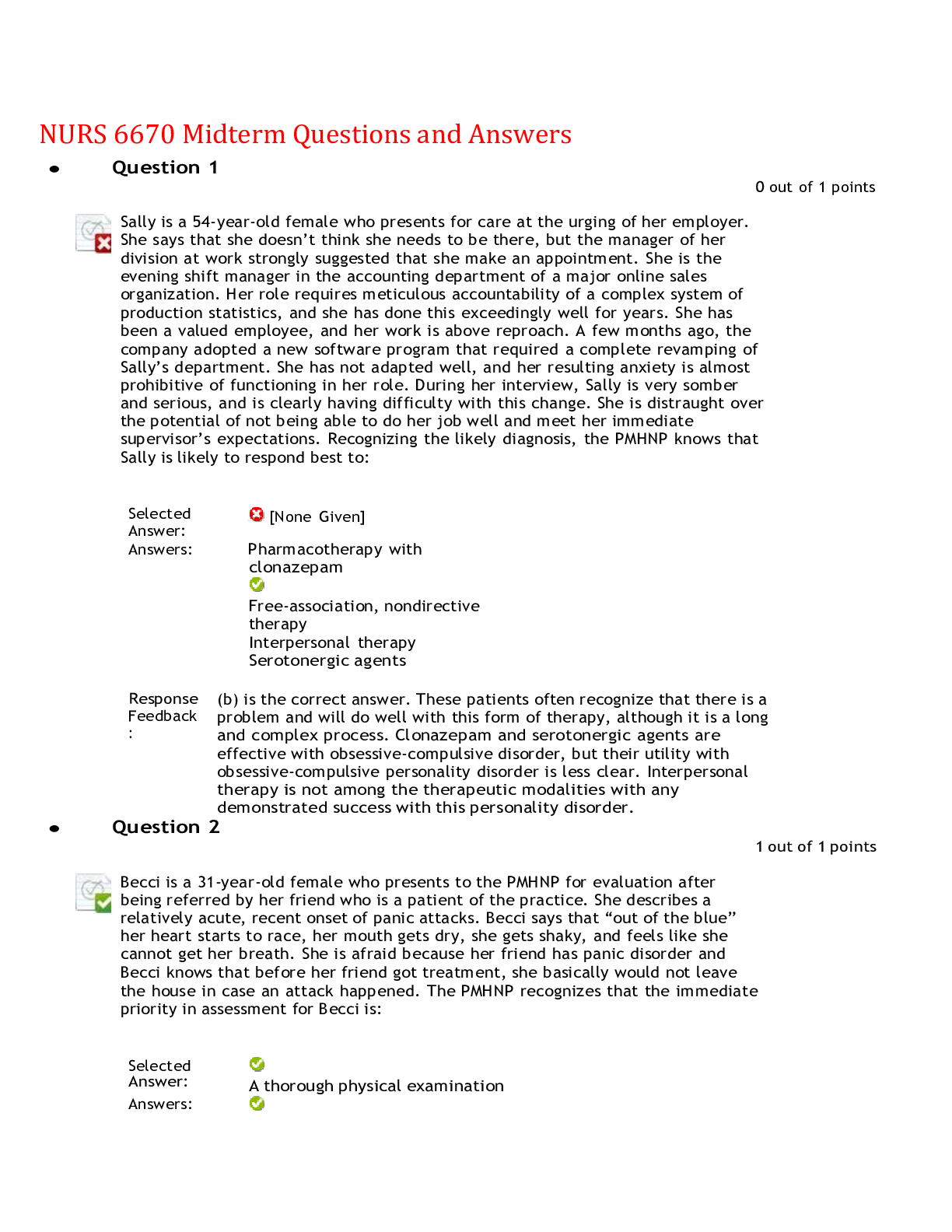
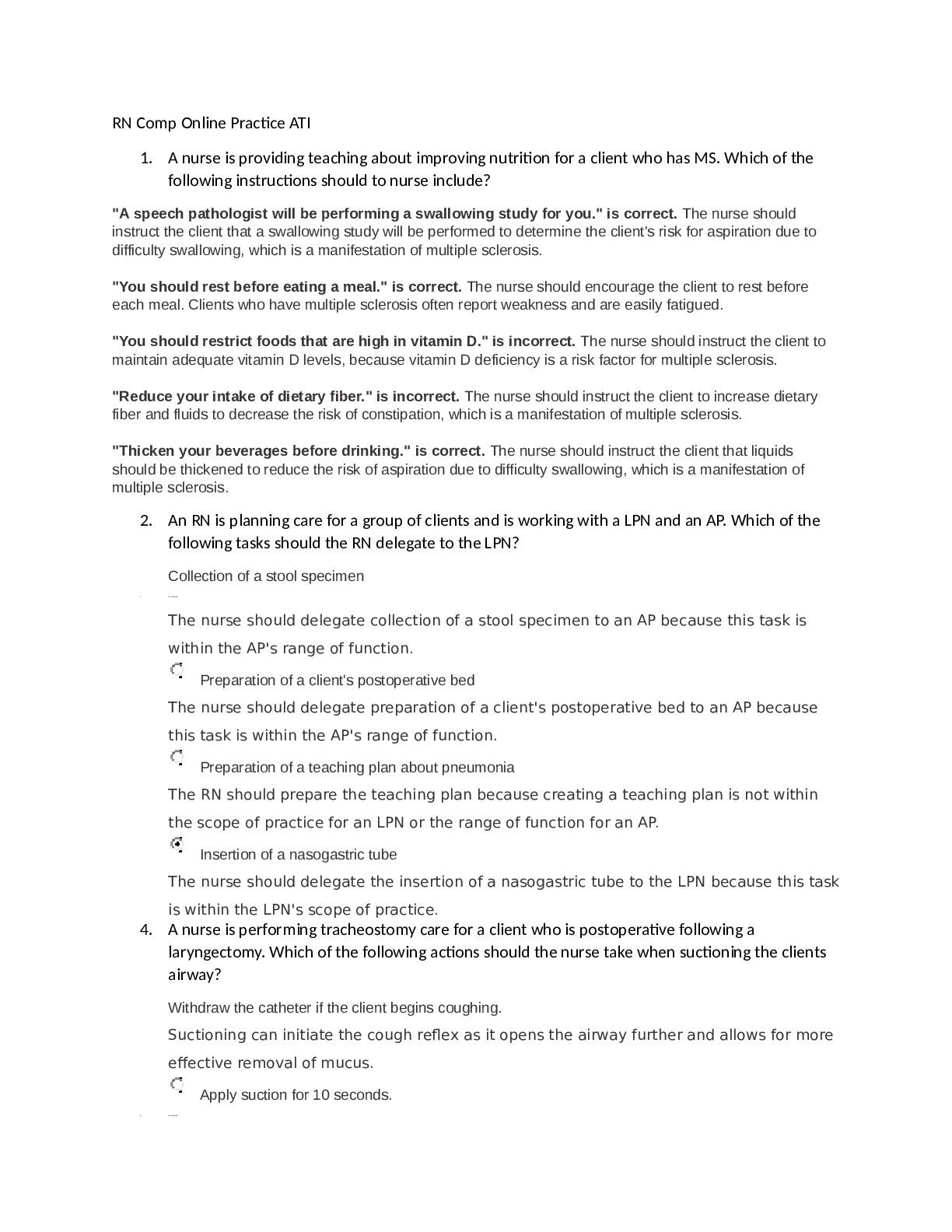

.png)
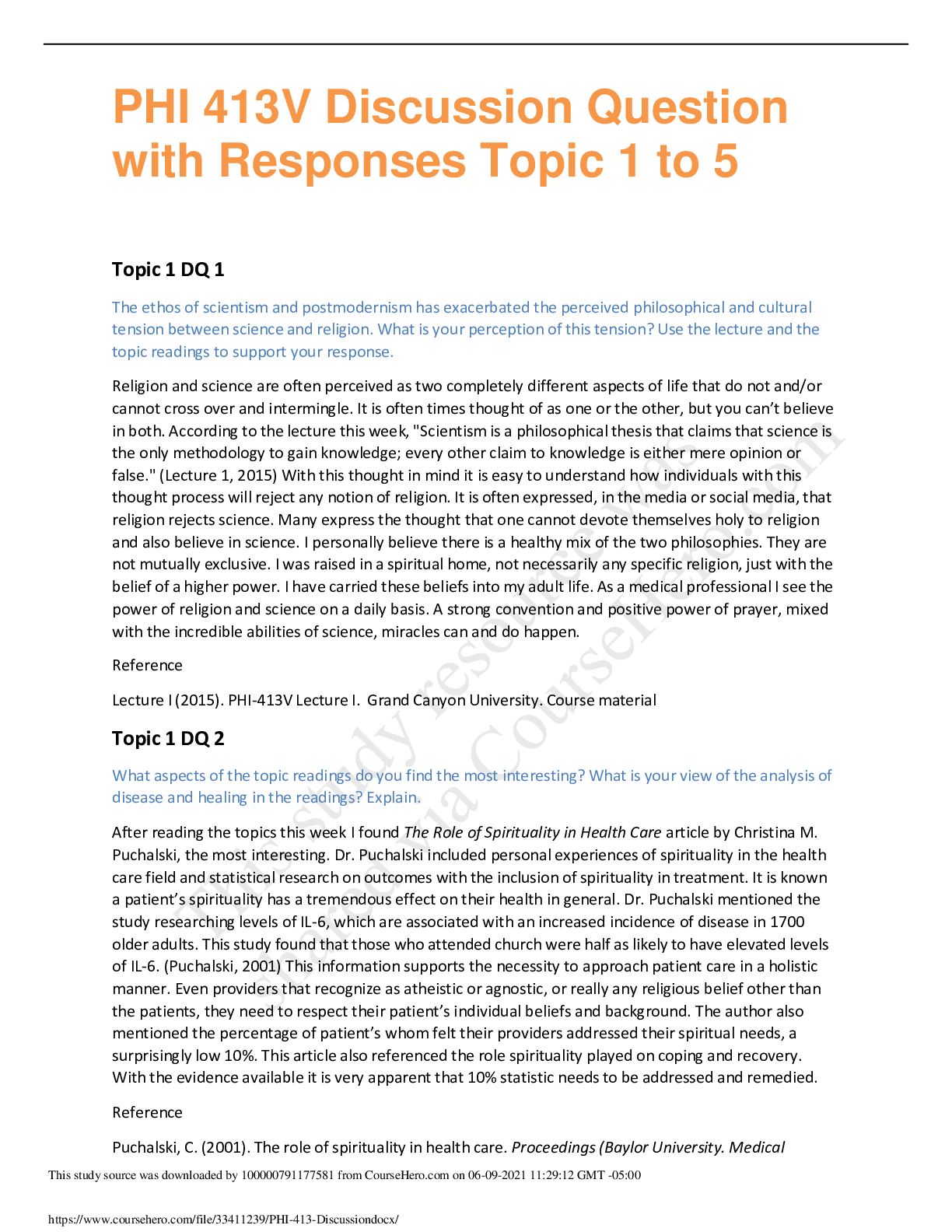
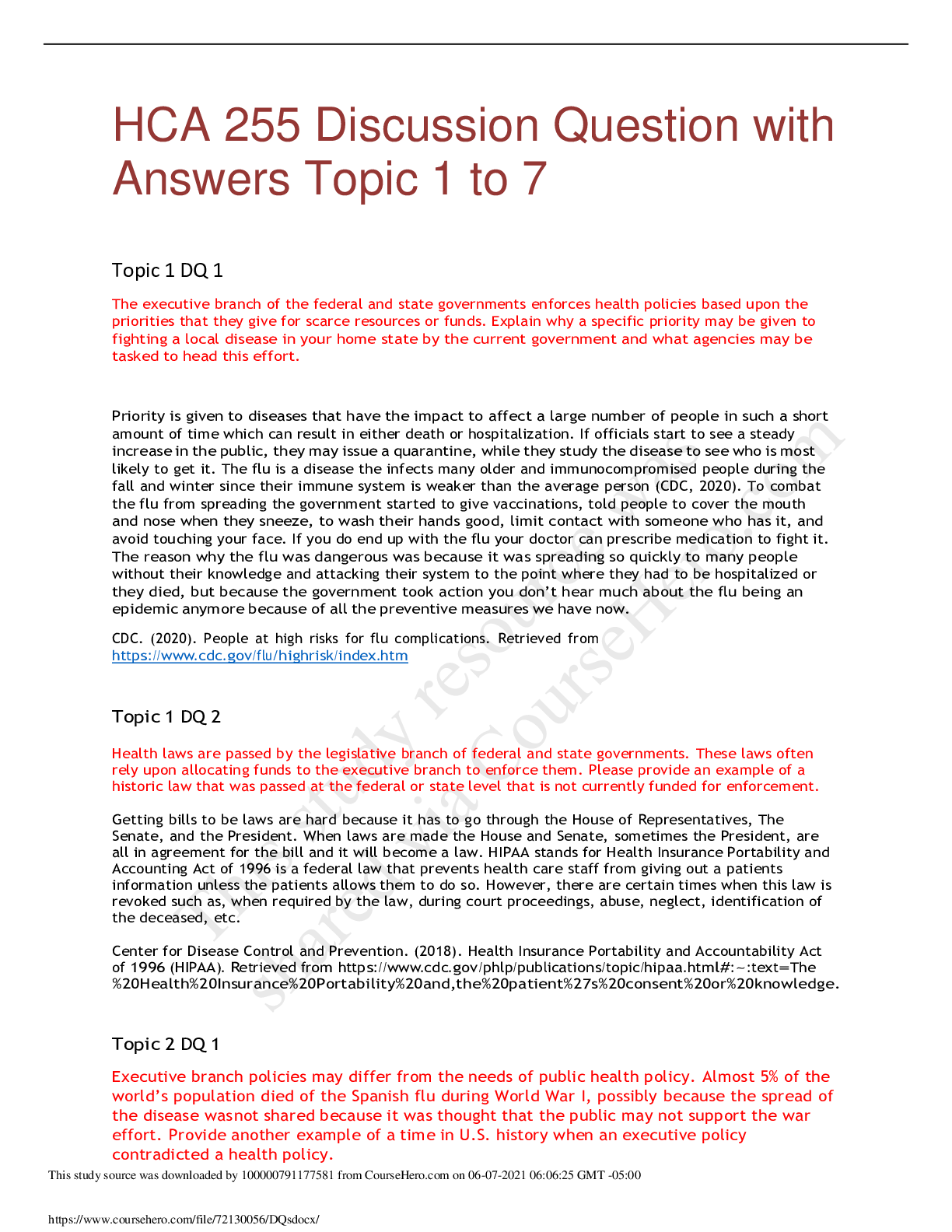
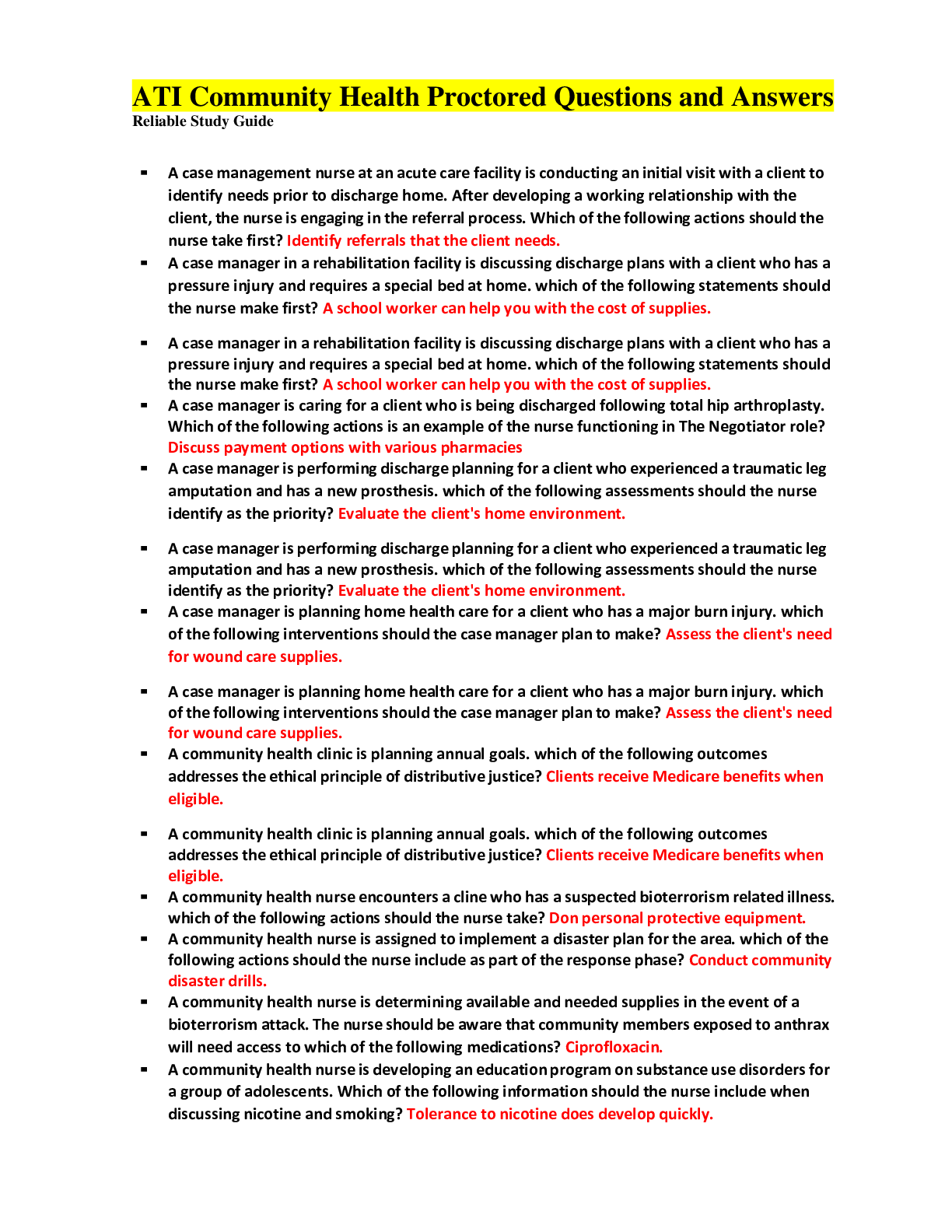
 PROFESSIONAL NURSING CAPSTONE QUESTIONS AND ANSWERS.png)
 Questions and Answers (latest Update), All Correct, Download to Score A.png)

